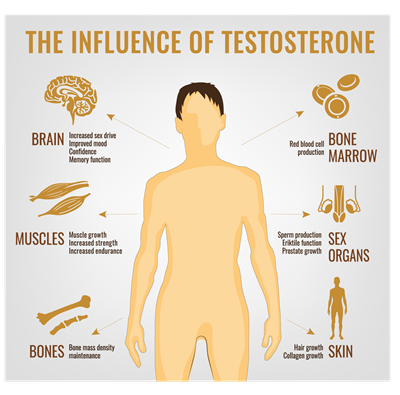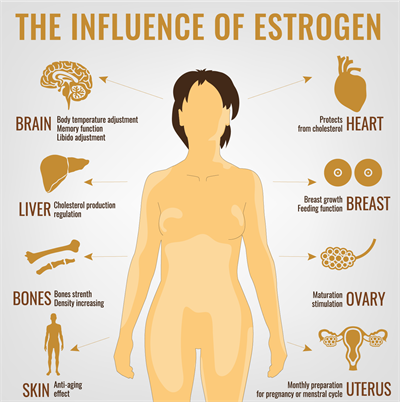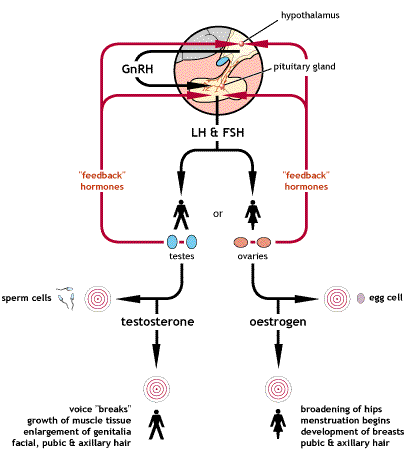PDF chapter test TRY NOW
In the last theory, we saw the advantages of sexual reproduction over asexual reproduction. In this theory, let us see sexual reproduction in humans. Before looking at the process, let us recall what we have studied in Class VIII, Reaching the age of adolescence.
We have already learned that the body undergoes a series of changes during adolescence, including changes in proportions and appearing of new features in the body, called secondary sexual characteristics.

Secondary sexual characters in male
Some of the secondary sexual characters are common to both boys and girls. The common changes include the growth of thick hair in body parts such as armpits and the genital areas between the thighs. Thinner hair appears on arms and legs, as well as the face. The skin becomes oily, and there might be the development of pimples and acne.
Similarly, there are differences in the changes that occur between boys and girls. In girls, the secondary sexual characteristics include the development of breasts (breast size increase), darkening of the skin of the nipples at the tips of the breasts, broadening of hips, etc. The process of menstruation starts among girls at this time.

Secondary sexual characters in female
There is a growth of thick hair on the face (facial hair) and cracking of their voice in boys. In addition, the penis periodically becomes enlarged and erect, either in daydreams or during the night. All these changes happen gradually over a period of months and years.
Why does the body show sexual maturation at a particular stage?
We have discussed how multicellular organisms require specialised cell types to perform specialised functions. Another specialised role is the formation of germ cells that participate in sexual reproduction. Humans develop specific tissues for this reason as well.
However, while the individual organism's body is developing to adult size, the body's resources are primarily focused on achieving this growth. Thus, the reproductive tissues begin to mature as the rate of general body growth slows down. This period during adolescence is called puberty.
When the reproductive system in both males and females becomes functional, there is an increase in sex hormone production, resulting in puberty. This phenomenon starts earlier in females than in males. Generally, boys attain puberty between the age of 13 to 14 \(years\). The girls reach puberty between \(11\) to\(\ 13\ \)\(years\).
In a male, the onset of puberty is triggered by the secretion of the hormone testosterone in the testes. While in females, the secretion of estrogen and progesterone from the ovary triggers puberty.

Hormonal regulation of puberty in both sexes
As we have seen in an earlier chapter, the secretion of male and female hormones are under the control of the pituitary gonadotropins - luteinizing hormone( \(LH\)) and follicle-stimulating hormone (\(FSH\)).
The following video explains the secondary sexual characters observed in males and females and the hormones that cause the development of secondary sexual characters:
So, how do the changes during adolescence link to the reproductive process?
Recall that in sexual reproduction, the germ cells from two different individuals fuse together. This occurs when the germ cells are released externally during the process of mating.
Also, the transfer of germ cells needs organs like the penis that is mature and can become erect. In mammals like humans, the baby is carried inside the mother's body for a long time before being breastfed. Female reproductive organs and breasts will need to mature to meet these possibilities. Let us take a look at the mechanisms involved in sexual reproduction.
Reference:
youtube.com/watch?v=aREAIE-GyDc&t=4s
https://upload.wikimedia.org/wikipedia/commons/3/31/Flow_diagram_showing_normal_hormonal_control_of_puberty.gif
